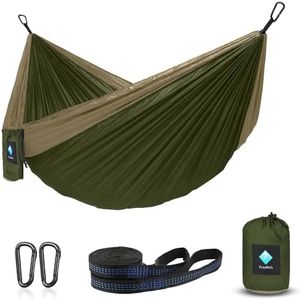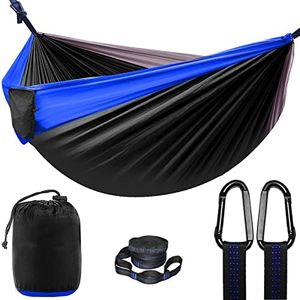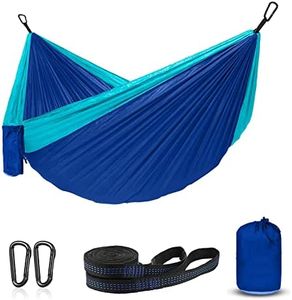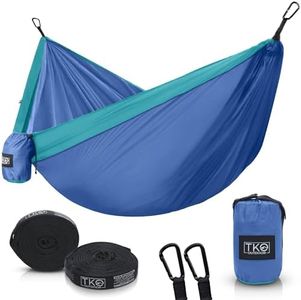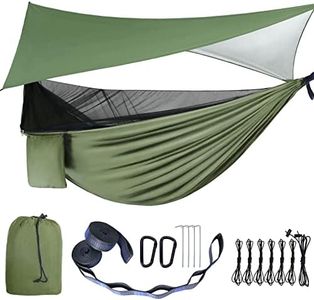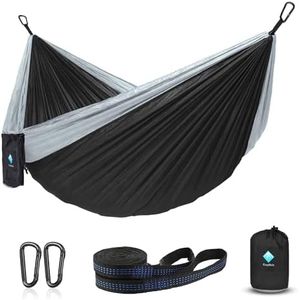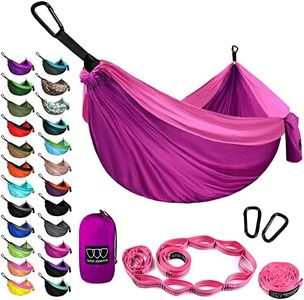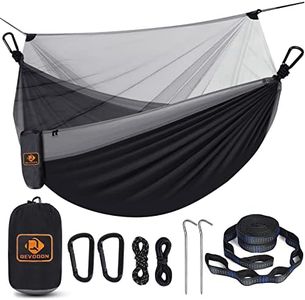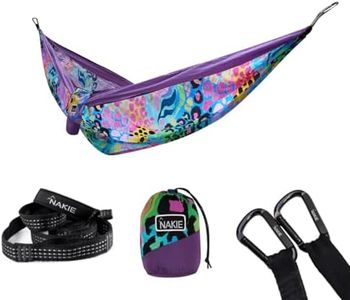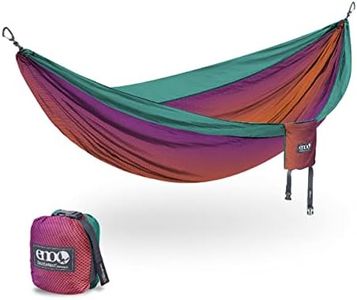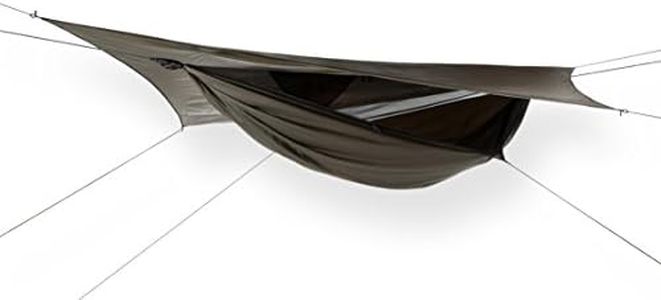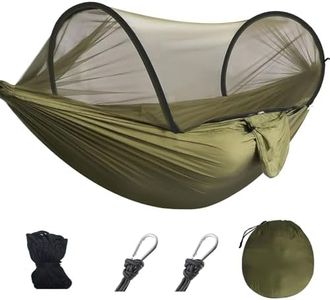We Use CookiesWe use cookies to enhance the security, performance,
functionality and for analytical and promotional activities. By continuing to browse this site you
are agreeing to our privacy policy
10 Best Camping Hammock
From leading brands and best sellers available on the web.Buying Guide for the Best Camping Hammock
Choosing the right camping hammock can make a big difference in your outdoor experience. The right hammock will depend on where and how you plan to camp, your personal comfort preferences, and features that make setup and use easier for you. It's important to understand the main specifications available to ensure you pick a hammock that matches your needs and provides reliable comfort and safety.MaterialThe material of a camping hammock is what it's made from, and it's important because it influences durability, breathability, weight, and comfort. Common materials include nylon, polyester, or a blend. Lightweight nylon is popular for backpackers because it's strong yet packs down small, though it may feel a bit slick. Polyester is slightly heavier but usually less stretchy and resists mildew better. If you plan to camp in humid areas or want a lightweight option for treks, nylon is a good choice. For casual camping or if durability is a high priority, polyester might suit you better.
Weight CapacityWeight capacity tells you the maximum amount of weight the hammock can safely support. This is key for safety and longevity. Hammocks typically support from around 200 pounds up to 500 pounds. Lighter capacity models suit solo, average-weight users, while higher capacities are essential for larger individuals or two people sharing. To choose right, consider your own weight, and if you might add a child, pet, or gear, make sure the capacity comfortably covers the total.
Size (Length and Width)The dimensions of a hammock impact comfort and usability, especially for taller or broader individuals. Lengths usually range from around 8 to 10 feet, while widths go from 4 to 6 feet. Shorter, narrower hammocks are lighter and more compact, often suitable for kids or small adults. Longer and wider hammocks offer more comfort, especially if you want to lie diagonally for a flatter sleep. Choose a size that accommodates your height and if you like to lounge with space, go wider.
Suspension SystemThe suspension system refers to how the hammock is hung, usually with straps, ropes, or carabiners. This matters because a good system makes setup quick and safe. Some hammocks come with easy-to-use tree straps that are adjustable and conserve tree bark, while others require you to buy suspension separately or tie knots. If you value convenience, beginner-friendly strap systems are best, especially if you'll set up frequently or in different spots.
Weight and Packed SizeThese specs say how heavy the hammock is and how small it can be packed for carrying. Camping hammocks range from ultra-light for backpackers up to heavier versions for car camping. If you plan to travel far on foot, aim for lighter, more compact hammocks; if you're driving to your campsite, you can afford a heavier but perhaps more comfortable setup.
Bug Net and Weather ProtectionSome hammocks include built-in bug nets or rainflies, while others require you to buy these extras separately. A bug net keeps insects out at night, and a rainfly shields you from rain or dew. These features matter most in buggy or wet environments, so if you camp in areas where insects or rain are likely, look for hammocks with integrated protection, or make sure compatible accessories are available.
